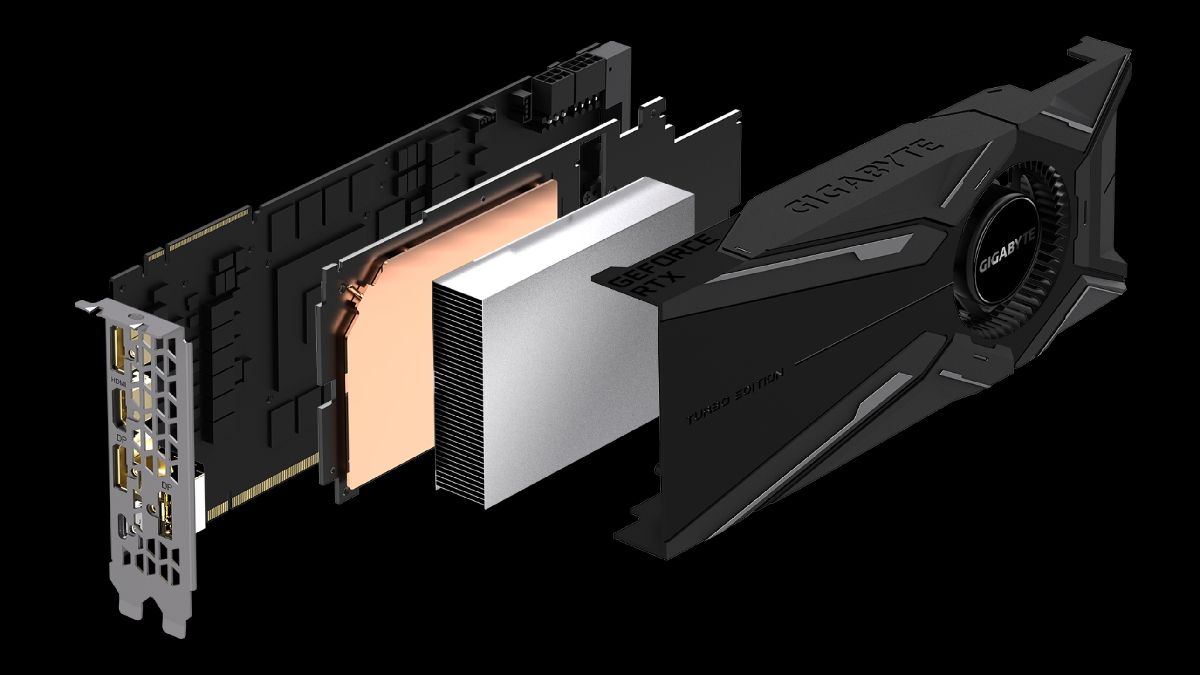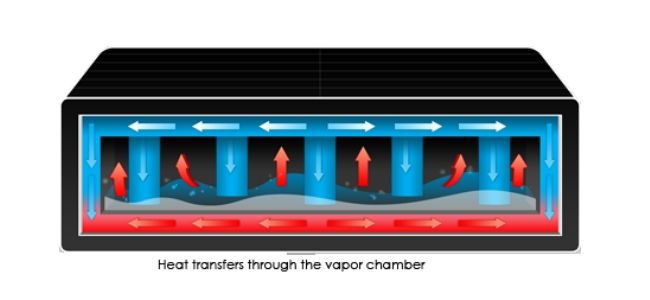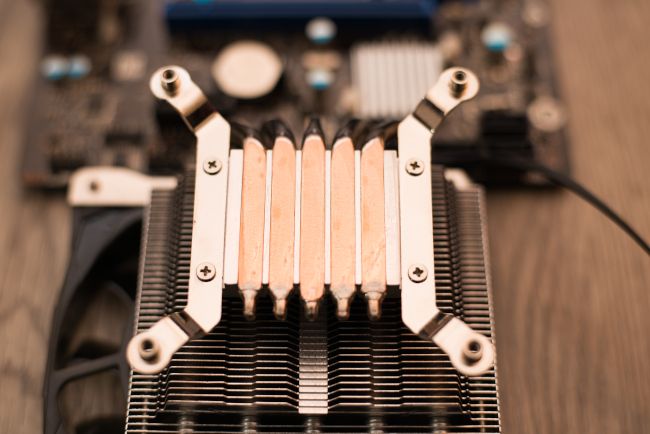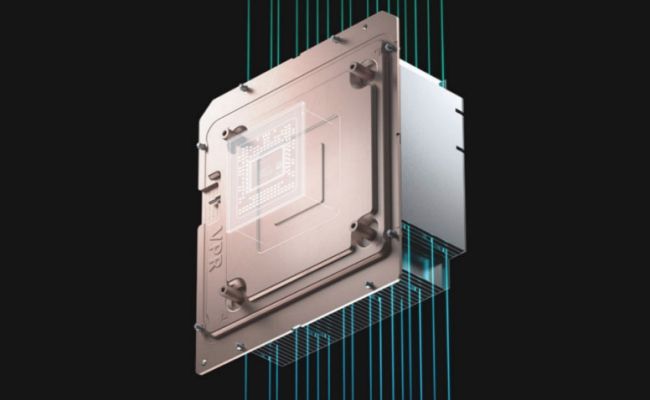Quick Links
Electronics components, particularly computer CPUs and GPUs, need an efficient cooling system to prevent overheating. A vapor chamber is one such cooling system that has gained traction over the last decade. Here's everything you need to know about it.
Cooling Modern Electronics
Vapor chamber cooling is a type of heat-spreader technology that uses evaporation and condensation of liquid to cool down an electronic component. Vapor chambers are sometimes integrated with heatsinks to aid in the cooling process.
You will most commonly find vapor chamber cooling in high-performance laptops and smartphones. But it's also used in servers and LED products. As it can absorb and dissipate large amounts of heat, vapor chamber cooling is very helpful in high heat flux applications.
How Does a Vapor Chamber Work?
A vapor chamber is basically a flat metal enclosure with a wick structure lining. It is filled with a small amount of liquid, typically water, and vacuum sealed. The low pressure inside the vapor chamber allows the fluid to vaporize at temperatures lower than its regular boiling point.
So when the vapor chamber is heated by an electronic component, such as your computer CPU, the liquid vaporizes. This vapor then circulates via convection and moves freely through the enclosure. And when it finds a cooler surface, it condenses and dissipates the absorbed heat. The condensed liquid then moves through the wick material and gets back to the hotter side. And this process continues as long as the electronic component is hot.
Although copper is commonly used in the construction of vapor chambers, you'll also find aluminum, steel, and titanium vapor chambers on the market. Similarly, some vapor chambers have a wire mesh as the wick structure, whereas others use sintered metal. And lastly, although water is the most common liquid used in the vapor chambers, methanol and ammonia are also sometimes used.
Vapor Chamber vs. Traditional Heat Pipe
Like a vapor chamber, a heat pipe is also a heat-spreader technology used in modern electronics. However, while both vapor chamber and heat pipe have the same working principle, they have several differences.
One of the primary differences is that a vapor chamber transfers heat in two dimensions, whereas a heat pipe only moves heat in one direction. As a result, vapor chambers are effective at uniformly spreading the heat across a surface, whereas heat pipes are more suited to taking heat from one place to another.
Vapor chamber cooling systems also occupy a smaller space than heat pipes, making them ideal for cramped and limited areas, such as smartphones and tablets. However, while heat pipes take more space, they are relatively more flexible. As they are bendable, heat pipes are more suitable for situations when heat needs to be moved to a remote condenser.
Additionally, the flat shape of a vapor chamber allows it to have better contact with the heat source or a heat sink. On the other hand, the cylindrical shape of the heat pipes makes it hard to attach them directly to a heat source. As a result, they are often placed in metal blocks to bring heat to them. Device manufacturers also sometimes flatten the heat pipes into oval shapes for better contact with the heat source, but even then, multiple heat pipes can be required to cover a wide surface.
Lastly, heat pipes are very cost-effective, whereas vapor chambers are expensive to produce. This is why you will mostly find vapor chambers in high-end devices.
Should You Go For Vapor Chamber Cooling?
As a consumer, you will encounter vapor chamber cooling in various devices such as desktop CPU coolers, GPUs, gaming consoles, smartphones, and laptops. While you are stuck with whichever cooling system a manufacturer has included in smartphones, laptops, or gaming consoles, vapor chamber cooling ensures you will get better thermal efficiency, resulting in overall improved performance.
But when you are building a PC, you have the choice to pick a cooling system that best serves your needs. And whether or not you should go for a vapor chamber-cooled CPU cooler or GPU depends on your budget and usage.
For example, suppose you plan to overclock your CPU, and it has a high TDP (thermal design power). In that case, a CPU cooler with vapor chamber cooling is undoubtedly a good option, especially if you don't want to go for active liquid cooling. It will help you bring out the best performance from your CPU and avoid thermal throttling. But if your CPU has a low TDP and you don't dabble in overclocking, vapor chamber cooling isn't going to make much difference. The same goes for the GPU.
Additionally, products with vapor chamber cooling will cost significantly more than those that only use heat pipes or solid metal blocks. So, consider your computer's needs and budget, and then decide.
If you're interested in other types of PC cooling, learn what a Peltier cooler is, or how realistic it is to cool your computer in a fridge.




